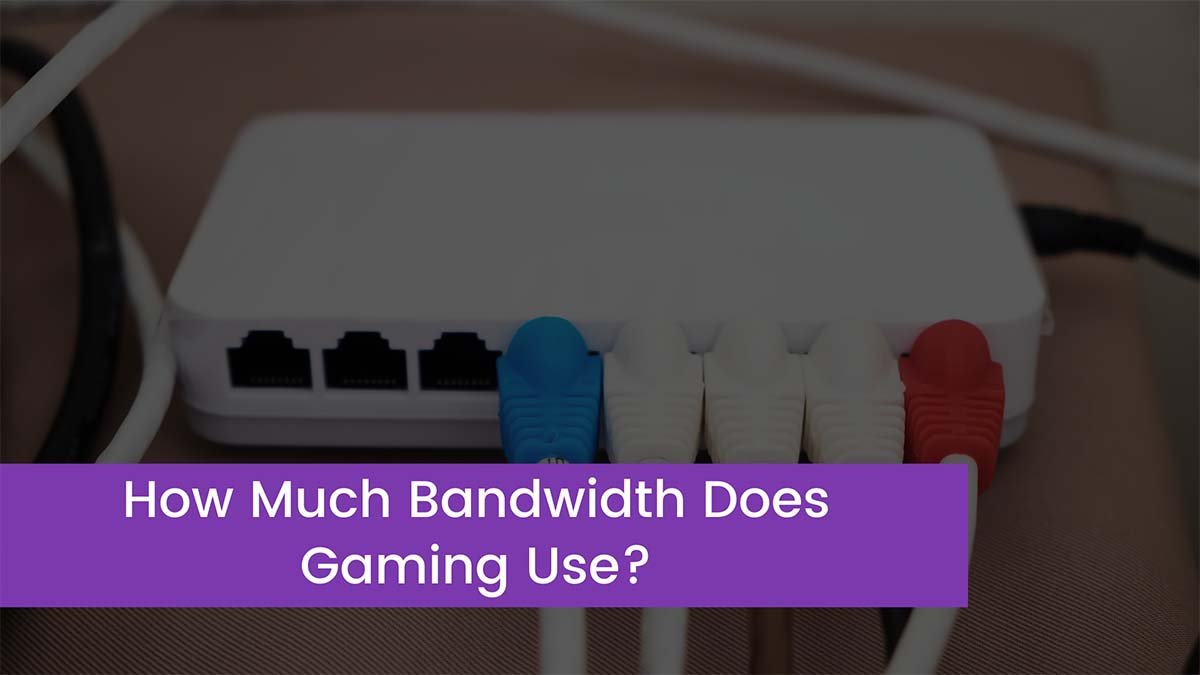Have you ever been in the thick of a game, on a roll, with ten people screaming at you via your headset, when your screen suddenly freezes? It irritates me.
Glitches happen, but your internet capacity can be an unnecessary stumbling barrier. Before you experience your next game lag, it’s a good idea to brush up on the bandwidth needs for the gaming devices you use, as well as how to eliminate speed from your list of probable issues.
You’re in good hands with WUSCHOOLS. Everything you need to know about the speed you’ll need to beat the competition is right here.
What exactly is bandwidth, and how does it impact my gaming experience?
While you may be aware that your Zoom conference requires 2Mbps for a single screen meeting since you spend so much time at home, broadband might have a greater impact on your gameplay than you may realize.
Bandwidth refers to the minimum and maximum amounts of data that can be transmitted over the internet at any given time, and it is measured in megabits per second (Mbps).
Internet speeds provided by a provider reflect total usage for an entire household network and can vary depending on a number of factors, some of which are beyond your control. Internet connection speeds can plummet if your household or neighborhood is stressing the bandwidth of your local network, much as the water pressure can drop in the shower while someone in your house flushes the toilet. Using many devices at once, as well as downloading, uploading, or streaming huge files can cause this.
Run internet speed tests with several devices turned on and off to see which devices or internet activity in your home are generating latency. It’s possible that the problem isn’t with your game system.
Gaming consoles
You’ll want to make sure your bandwidth is compatible with not only your Zoom meetings but also your gaming consoles, especially now that everyone is congregating closer to home. While you wait for your internet to catch up, you can’t let your Animal Crossing island lay inactive.
A minimum download speed of 3-6Mbps and an upload speed of 0.7-1Mbps is required for gaming on a PC or Mac. However, to completely accommodate, your home speed should be around 40-60Mbps.
A minimum download speed of 3Mbps and an upload speed of 1Mbps are required for the Nintendo Switch. Your home’s internet speed should be at least 40 megabits per second.
The Nintendo Wii U requires a minimum download speed of 3Mbps and an upload speed of 1Mbps. The maximum speed in your home should be 25Mbps.
The Xbox Series X, which will be released in November, will have the desired bandwidth of around 10Mbps.
According to the highly anticipated Playstation 5, a household speed of 25Mbps is expected.
It should be noted that the above-mentioned internet speed thresholds are calculated on a per-second basis and indicate bandwidth dedicated to your preferred gaming console rather than the entire household. A housemate watching live HD sports in the next room could just as easily cause lag.
Increasing your bandwidth
When you have a big volume of data going over your internet for an extended length of time, you may experience slow bandwidth. But don’t worry, we’ve got some tricks up our sleeves to help you boost your bandwidth and get back to playing in no time.
Hard-wire your console’s connection
A hard-wired connection to your household’s router via an ethernet connection is the most reliable approach to ensure you’re obtaining as much of your household’s bandwidth as possible, however, this isn’t always available. While a wifi connection is convenient, the speeds it provides are less consistent than those provided by a cabled connection. With an ethernet connection, your gaming console is practical “first in line” for crucial bandwidth.
Get closer to your router
Devices connected via wifi capture larger bandwidths closer to the router than they do farther away, as simple as that sounds. So, moving your router out from behind a couch or setting up your gaming system next to your router could be a simple option.
Amplify your signal
If getting closer to your wireless router is too difficult, you can use an amplifier to strengthen your home network’s wifi signal near your game console. Before you buy it, make sure it’s compatible with your router and internet service provider’s network.
“Airplane Mode” is a good option
Because there are so many devices on the network, you may be encountering latencies in your games. To acquire that extra bandwidth, try switching your phones and tablets to “Airplane Mode.”
Turn off background data and updates
On linked laptops and phones, change the notification, auto-update, and background data settings. Applications that aren’t being used can consume a lot of bandwidth. Just remember to switch these updates back on at some point.
Upgrade your connection speed
If you’ve exhausted all of your troubleshooting options and are still experiencing lags, it may be time to upgrade your home network’s overall capacity by switching to a higher-speed connection package from your internet service provider.
Your router should be updated
Are you still using that outdated router? It’s probably time to replace your router if it’s more than 5 years old. Because newer routers are better engineered to accommodate gaming speeds, upgrading your router may be worthwhile if you’re a gamer.
Conclusion
We conclude the above article by saying that the minimum and maximum amounts of data that can be transmitted over the internet at any one time, measured in megabits per second, are known as bandwidth (Mbps). You can also come to know about the best points to increase your bandwidth.




